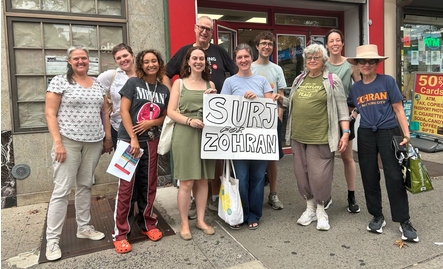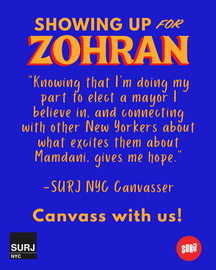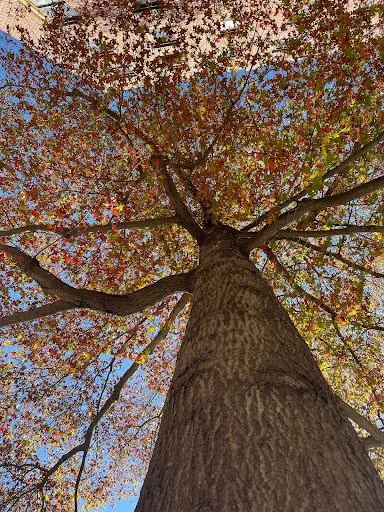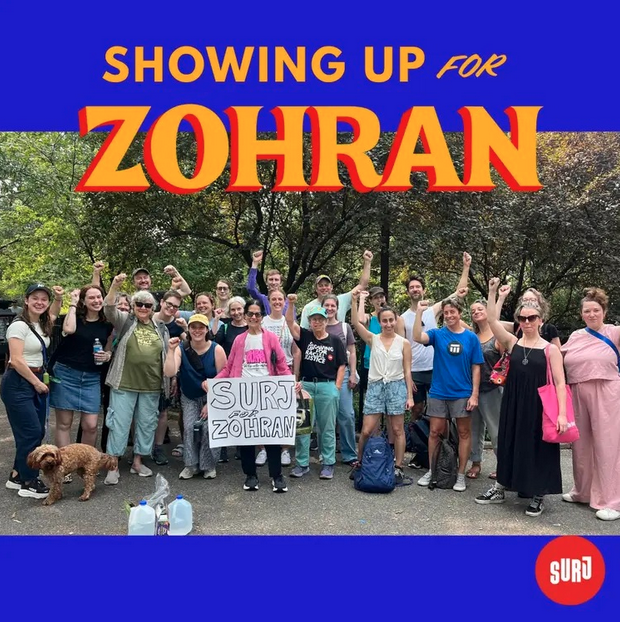Earlier this fall, the Indigenous Solidarity Working Group held a land stewardship event in Inwood Hill Park. It was a beautiful day and a lovely, sweet gathering of SURJ folks; we introduced ourselves to the land, then tended it by pulling goutweed. And we learned a bit about its history. We stood around Shorakkopoch Rock, and heard about the myths perpetuated at and about that very spot. A plaque on the rock celebrates it as the place where the Dutch “purchased” the island of Manhattan in 1626 - a false monument that perpetuates colonial myths and erases our region’s complicated and violent history.
For many of us, this can be a particularly tricky time of year. Sitting down to write this, I’m somehow both surprised by and resigned to the fact that we’re here yet again. Thanksgiving is this week. And what is different? Whether you’ve been with SURJ for years, or are newer to this community, you likely understand that the myth of Thanksgiving is just that: a myth. For a lot of folks, Thanksgiving has shifted toward a holiday of food and family, perhaps a time to express a rushed moment of gratitude. But this shift doesn’t change the fact that Thanksgiving is a holiday rooted first in genocide and then in erasure. Right now, it feels especially scary to live in a world in which the so-called victors get to decide which story gets told. And yet, here we are. Thanksgiving again. What more can be said? What is new?
The urgency of white supremacy sneaks up on me in these moments. It makes me want to look for more rapid change and throw my hands up in frustration that year in, year out, we seem to be fighting the same fight and having the same conversations surrounding this holiday. And of course, there are more and more real reasons to feel urgent in these times, and a great deal of crucial, time-sensitive actions to be taken.
And yet.
In these moments of frustration and overwhelm, I’m reminded that there is a lot to be learned from the land I’m standing on. This land was here and well-stewarded long before my ancestors arrived from Europe. And it will continue to be here. Trees grow slowly and adapt to the resources they have. Bird populations migrate and return. The people indigenous to this land are still here and continue to resist elimination. And the work of dismantling white supremacy, repairing a legacy of harm, and building new rituals based on real community and connection takes time. And care. And thoughtful, ongoing, intention.
So what, in fact, is new this year?
For many years, SURJ NYC has moved money to the American Indian Community House (AICH) via the Manna-hatta Fund. As of last month, AICH announced they now have the capacity and infrastructure to receive and manage their donations independently, due in no small part to fundraising by the Manna-hatta Fund and their supporters over the last six years. We’re excited to continue to support AICH as they enter their new chapter, and we celebrate the great success of the Manna-hatta Fund in organizing white folks to move money.
And what else?
Last year at this time, several of the Indigenous Solidarity coordinators traveled to Plymouth to attend the National Day of Mourning, where we joined chants to free Indigenous activist Leonard Peltier, who at the time was the longest held political prisoner in the country. Earlier this year, after a decades-long campaign, Leonard Peltier was finally freed after spending nearly fifty years in prison.
This year, several of us will be at the National Day of Mourning again. We are looking forward to deepening our work in Indigenous Solidarity, connecting with a wider community, and continuing to relearn what it means to be in relationship with the land and with each other.
The work continues. Whether you’re looking to call in family members sitting around a Thanksgiving table, move money to an Indigenous-led org, or do some unlearning or relearning, we have some ideas on ways to meaningfully move this week:
Steam the National Day of Mourning
Several of the SURJ’s Indigenous Solidarity coordinators will be there in person again this year! Join us virtually by tuning in here at noon (12:00pm ET) on Thursday.
Move Money
The American Indian Community House (AICH) is now accepting direct donations.
Start a Conversation
Talk with your family and community about your own rituals and unpack some of the harmful myths that surround Thanksgiving. This toolkit from the Indigenous Solidarity Network has resources to help you get started.
What might it look like to build new rituals? Let’s continue to create the space for this together.
With care and gratitude,
SURJ NYC’s Indigenous Solidarity Coordinators
(Grace, Elana, Sarah, Kyle, Kristin, Alison, and Katharine)





